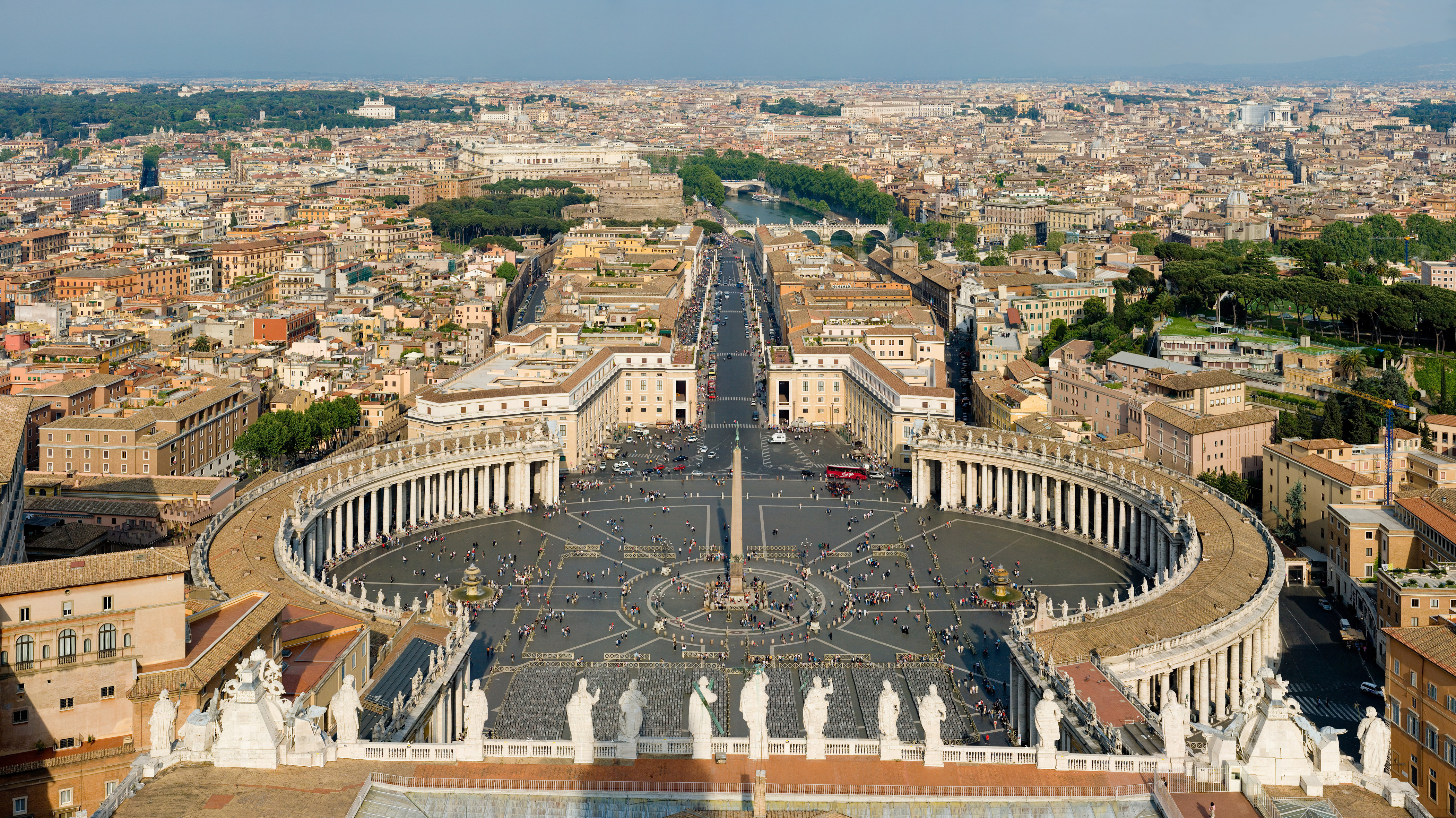Located in the Vatican City in Rome is the Basilica of St Peter the Apostle (one of the twelve messengers of Jesus Christ). The Basilica that stands there today is built on the rite of the old Basilica of St Peter who was crucified. His tomb is beneath the Basilica in the Vatican Necropolis.
This is the view from the top of the lantern of the Basilica. The Vatican City, and the Basilica in particular is recognised as the 'nerve centre' of modern day Christianity, especially because of the home of the Pope in the adjacent Sistine Chapel and of course Rome is also the epicentre of Roman Catholicism.
The dome is the largest freestanding in the world, the diameter of which is 42.34m and the height is 43.2m. You only kind of get the feeling of the scale when you realise that the lantern is 137m from the church floor!
There are around 800 columns that surround St Peter's square, 4 columns deep, with 390 statues surrounding the top of the trapezoidal entrance and oval area of the square.
There's 5 large doors off of this into the Basilica - this is just the 'front porch'! There is one only opened every 25 years called the Holy door. This is to commemorate the Jubilee. It's made of solid bronze.
We're now looking down the nave of the main Basilica, and can see the main dome from the entrance. Other than the main dome there are eight other smaller domes. Each of these are heavily mosaic'd and are decorated with gilt.
Each of the many features / columns / flooring / walls / statues are made out of marble, plaster and bronze. There is also a lot of solid gold elements.
There are forty five separate altars inside of the Basilica. The Papal altar, the main altar, stands over the entrance to the Confessio (the Chapel of Confession) which leads downstairs to the original site of St Peter's Grave.
Around the inside of the grand dome reads an extract from the gospel of Mathew in Latin: ' You shall be Peter the rock, and upon this rock I will build my church. To you I give the key to heaven'.
Many Renaissance artists and architects worked on the Basilica including Michelangelo and Raphael. There were a lot of arguments and disagreements because each of the artists wanted their own 'stamp' on the design.
The main thing for me is the Basilica's age. It took nearly 120 years to build and that was 390 years ago - the last stone was laid on 18th Nov 1623.
The sheer beauty and breathtaking size and age of the building makes this an interesting and overwhelming subject to me and 7 million other tourists who visit every year. That's a lot compared to the 1000 inhabitants of the Vatican City!
Although this is the site for many religious pilgrimages, it is highly appealing to many art / architecture enthusiasts, tourists and I'm sure is on many 'bucket lists' from all walks of life, apart from maybe younger children. The scale and grandness is enough to capture the imagination.
After presenting my summer brief to the group, I received a post-it note of feedback. Some feedback was reassuring, but not very helpful but I also received some good, constructive feedback too. I have highlighted the most constructive in italic bold:
Danielle:
- Lots of in-depth research, easy to digest.
- Good to use own photos.
Lizzy:
- Good explanation of structural developments.
- Clear use of images to support research.
- Very interesting and engaging visuals.
- Strong primary research.
Jane:
- Good visual tour of the cathedral with well researched facts.
- You tied in some artists names as well - perhaps you could research artwork from there?
Amy:
- Nice/ own photography, beautiful place.
- Inspired by your own trip, which makes it more personal.
- Made us aware of the giant scale, (which I didn't know) which we couldn't see by the image.
- Obviously (you're) interested in architecture.
- Very factual and interesting!
Jordan:
- Presentation is visually engaging
- Informative facts.
- Primary images used.
- Links to artists.
- It looks like a very inspiring place! You could have mentioned how it interested you creatively.
Joe:
- Good inclusion of facts and stats.
- Like the walkthrough style of the presentation.
- Very insightful!
- Could include relation to modern graphic design styles... could be difficult?!
Melissa:
- A presentation done on a personal visit.
- First hand information and photography made it very interesting.
- Contextual knowledge very good.
3 objectives for Summer Brief from feedback:
- Elaborate by researching into artists/ architects that worked on the building.
- Research/find links between my chosen subject and graphic design.
- Determine why it interests me creatively and elaborate on it.































































